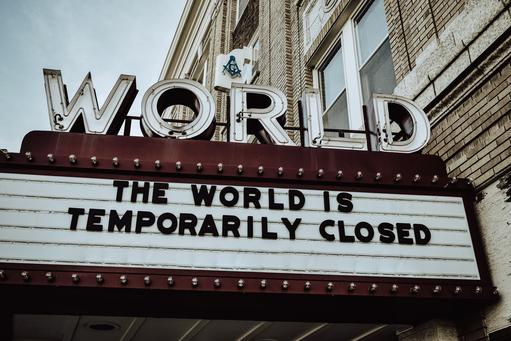Directory

To everyone working long and stressful hours on the frontline of healthcare; thank you for the sacrifices you’re making every day to help others in their moments of need. Your dedication, commitment and courage have our deepest gratitude and admiration.
Also, our heartfelt thanks go to all key workers who are unselfishly providing essential services, which are helping all of us through this coronavirus outbreak. Your resolution and mettle make a huge difference to our daily lives and we hold you in the highest esteem.
#coronavirus #CoVID-19 #frontlinehealthcareworkers #keyworkers #healthcare
Directory:
Tags:

- The coronavirus CoVID-19 has created the greatest health-cum-economic-cum-societal crisis in history and put unprecedented pressure on overstretched and unprepared healthcare systems
- Before the coronavirus outbreak, primary care in England already was in crisis, fuelled by an aging population, a large and increasing demand for its services and a shrinking supply of health professionals
- In 2019, before the outbreak, 75% of primary care doctors (GPs) across 540 clinics in England were over the age of 55 and nearing retirement and a large percentage of newly trained GPs were seeking employment abroad
- Patients who could not get GP appointments used A&E departments as convenient drop-in clinics for minor ailments, which significantly increased healthcare costs and burden
- For decades successive UK governments have tried in vain to transform the nation’s primary care services predicated upon face-to-face patient-doctor consultations
- Several well-funded long-term national plans advocated increased digitization of some routine primary care services
- But before the coronavirus outbreak only 1% of all primary care consultations were online
- What these national plans could not achieve in decades appears to have been achieved in days by the UK’s NHS’s response to the coronavirus outbreak
- Today, millions of patients in England are having face-to-face appointments with their GPs replaced by telephone or video consultations
- Could CoVID-19 transform the UK’s traditional primary care model?
The coronavirus CoVID-19
The 1918 Spanish Influenza remains the most devastating virus in modern history. The disease swept around the globe and is estimated to have caused between 50m and 100m deaths. A cousin of the same virus was also behind the 2009 swine flu outbreak, thought to have killed as many as 0.58m. Other major viral outbreaks include the Asian flu in 1957, which led to roughly 2m deaths and the Hong Kong flu, which killed 1m people 11 years later.
In this Commentary
UK’s primary care crisis
Changing and aging population
Shrinking supply of GPs
Failing national initiatives to improve primary care
The UK’s NHS
National plans to improve the NHS
NHS long term plans and private online healthcare solution companies have delivered little change
The plan emphasises the importance of developing digital services, and recommends that within five years, all patients should be able to access GP consultations via a telephone or online. This goal is supported by NHS Digital, which is the national information and technology partner to the UK’s health and social care system. Its mission is to harness the power of information and technology to improve healthcare. Over the past decade there has been an increasing number of innovative online private healthcare solutions companies entering the market. (see below). Notwithstanding, these and the NHS’s well-funded national plans, have failed to dent the primary care crisis by slowing the vast and escalating demand for healthcare and reversing the shrinking supply of healthcare professionals. So, for the past two decades at least, the NHS has tended to operate on the cusp of a crisis.

A doctor only needs to touch a patient if s/he is going to operate on that patient
Innovative online healthcare solution enterprises
Technologically heavy and strategically light
A Chinese example
Takeaways

Harry Diaz
Nottingham DentalLocated in Katy, TX, Nottingham Dental is your local, comprehensive dental clinic for the entire family! We can help you begin your journey to a healthy, beautiful smile. Our goal is to provide patients with the highest quality dental care in a comfortable, relaxed and friendly environment.
view this profile

James Divine
Sun Ridge SmilesAt Sun Ridge Smiles, we proudly offer a full suite of services to provide high-quality dentistry to our El Paso community. From routine cleanings to dental fillings to wisdom teeth removal, we are fully equipped to treat a diverse range of dental needs. We look forward to taking care of your smile now and for many years to come!
view this profile

Jason Clark
Dentist Houston TxURBN Dental is the premier Houston Tx Dentist that will offer the highest quality material and laboratories at low insurance PPO prices. It is no wonder URBN Dental has been voted the best Dentist in Houston Texas. URBN Dental is the expert in General Dentistry, Invisalign, and Cosmetic Dentistry. Most procedures have zero downtime, allowing you to resume regular activities the same day.
view this profile

Eugene Tracy
Physiotherapist Gold CoastIf you are looking for the best physiotherapist at the Burleigh Central to keep yourself fit and healthy.You should come and visit us for the best services. We have experts and experienced, dedicated physiotherapists and massage therapists for you to satisfy completely.
view this profile

Peel Court Pharmacy
Peel Court PharmacyWe're your local, independent late-night pharmacy and we pride ourselves on the quality of pharmacy services and patient care we deliver 100 hours a week right up to 10.30pm (check website for details)!
We serve most surgeries locally and are happy to collect and deliver your prescriptions. Online NHS prescription ordering and NHS minor ailments scheme
Phone Number:
0182 763 118
view this profile

David Mclin
Springfield Wellness CenterNeurodegenerative diseases are accompanied by chronic viral infections, which may result in an increase of neurodegenerative diseases progression, emerged. Neurodegenerative diseases are chronic degenerative pathologies of the Central Nervous System characterized by progressive loss of specific neurons that lead to a decline in brain functions.his includes diseases such as amyotrophic lateral sclerosis, Parkinson's disease,Alzheimer’s and CTE.At Springfield Wellness Center, Our training program prepares physicians and mental health practitioners to provide the highest measure of care with the intravenous application of Brain Restoration or Nicotinamide Adenine Dinucleotide (BR+/NAD).
view this profile
Directory:
Tags:

- Everyone connected with healthcare supports interoperability saying it improves care, reduces medical errors and lowers costs
- But interoperability is a long way from reality and electronic patient records are only part of an answer
- Could Blockchain a technology disrupting financial systems resolve interoperability in healthcare?
- Blockchain is an open-source decentralized “accounting” platform that underpins crypto currencies
- Blockchain does not require any central data hubs, which in healthcare have been shown to be easily breached
- Blockchain technology creates a virtual digital ledger that could automatically record every interaction with patient data in a cryptographically verifiable manner
- Some experts believe that Blockchain could improve diagnosis, enhance personalised therapies, and prevent highly prevalent devastating and costly diseases
- Why aren’t healthcare leaders pursuing Blockchain with vigour?
Blockchain technology is disrupting financial systems by enhancing the reconciliation of global transactions and creating an immutable audit trail, which significantly enhances the ability to track information at lower costs, while protecting confidentiality. Could Blockchain do something similar for healthcare and resolve the challenges of interoperability by providing an inexpensive and enhanced means to immutably track, store, and protect a variety of patient data from multiple sources, while giving different levels of access to health professionals and the public?
You might not have heard of Blockchain, but probably you have heard of bitcoin; an intangible or crypto currency, which was created in 2008 when a programmer called Satoshi Nakamoto (a pseudonym) described bitcoin’s design in a paper posted to a cryptography e-mail list. Then in early 2009 Nakamoto released Blockchain: an open source, global decentralized accounting ledger, which underpins bitcoin by executing and immutably recording transactions without the need of a middleman. Instead of a centrally managed database, copies of the cryptographic balance book are spread across a network and automatically updated as transactions take place. Bitcoin gave rise to other crypto-currencies. Crypto currencies only exist as transactions and balances recorded on a public ledger in the cloud, and verified by a distributed group of computers.
A common misconception is that electronic patient records (EPR) resolve interoperability. They do not. EPRs were created to coordinate patient care inside healthcare settings by replacing paper records and filing cabinets. EPRs were not designed as open systems, which can easily collect, amalgamate and monitor a range of medical, genetic and personal information from multiple sources. To realize the full potential and promise of interoperability EPRs need to be easily accessible digitally, and in addition, have the capability to collect and manage remotely generated patient healthcare data as well as pharmacy and prescription information; family-health histories; genomic information and clinical-study data. To make this a reality existing data management conventions need to be significantly enhanced, and this is where Blockchain could help.
|
|
Directory:
Tags:

|









